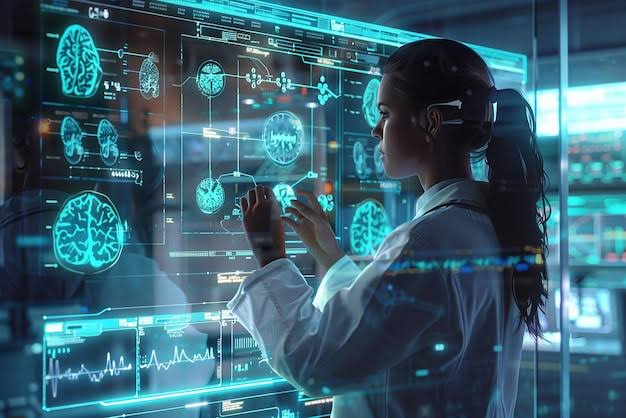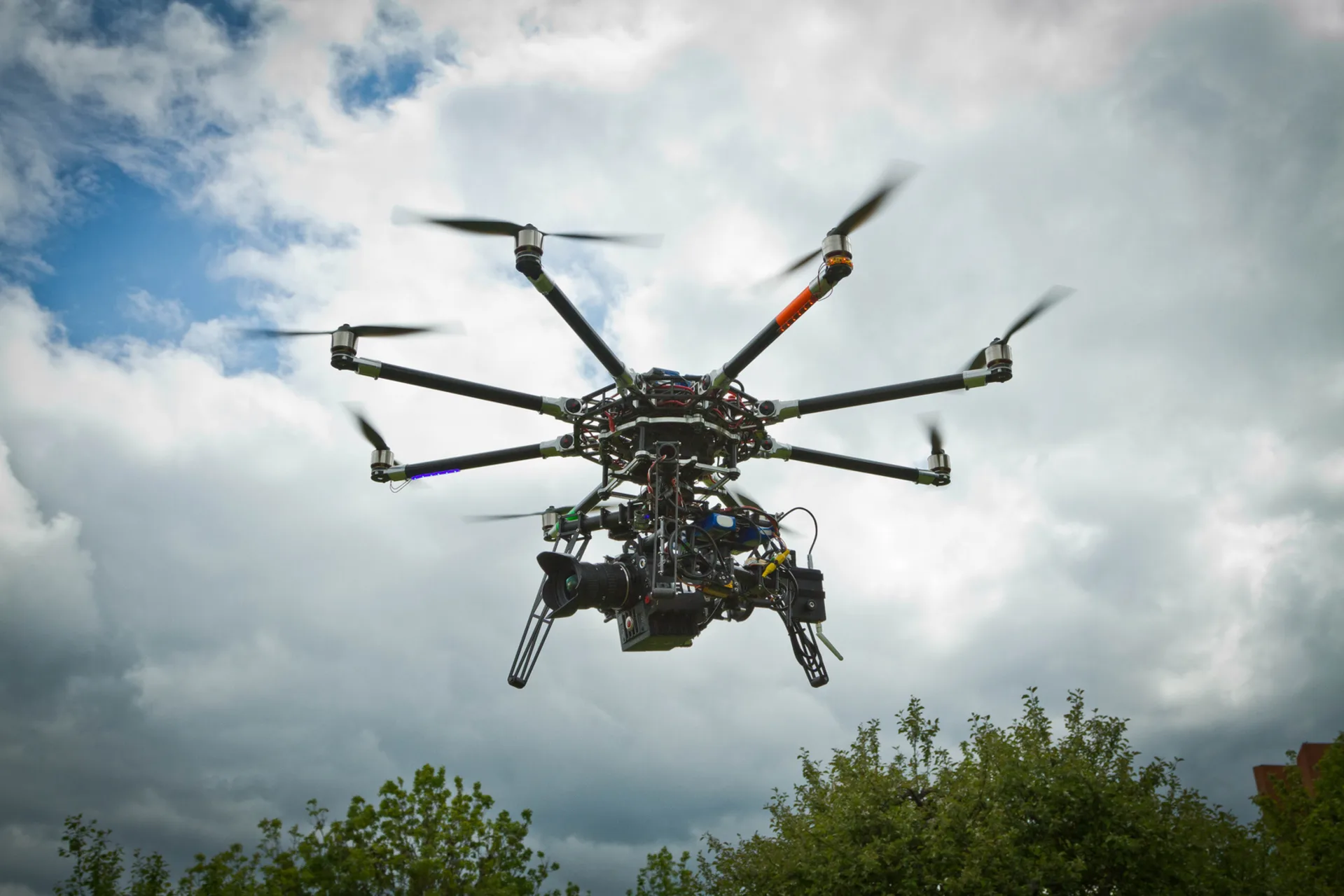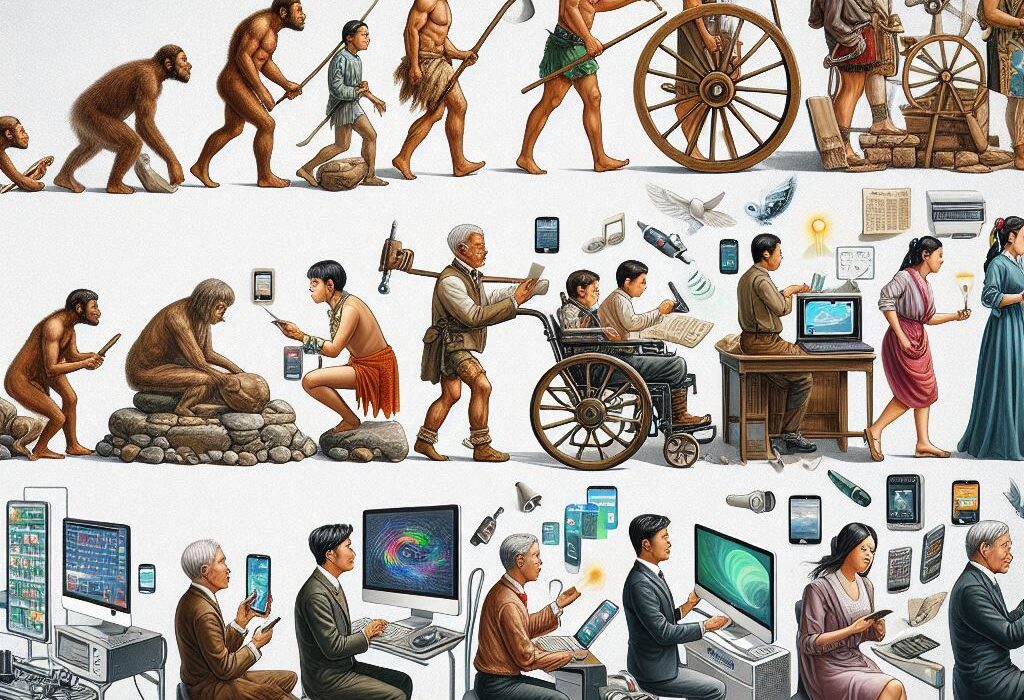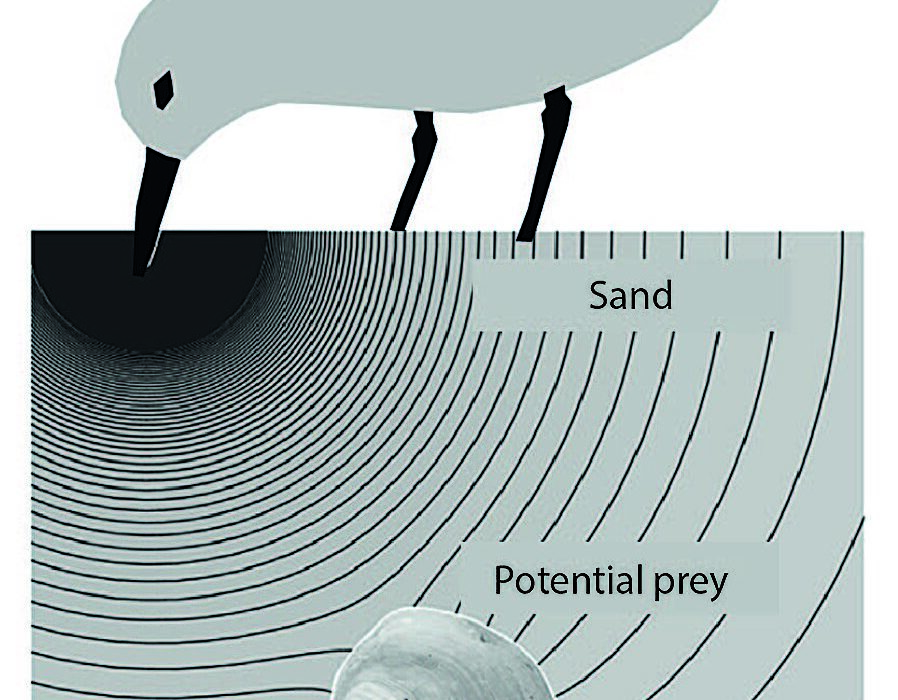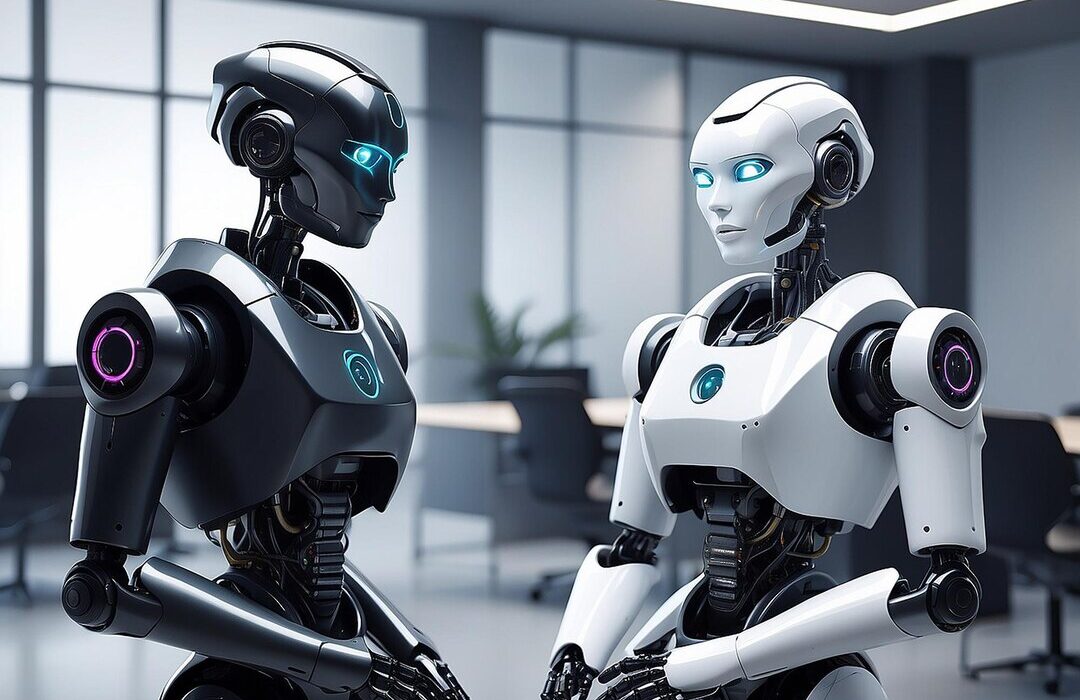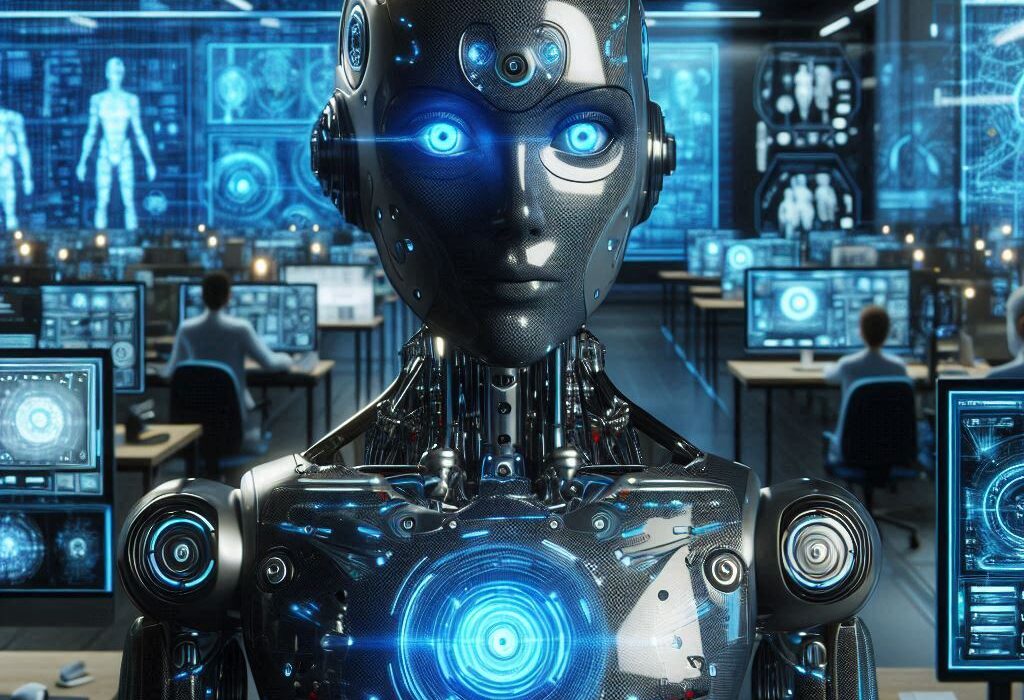For most of human history, disease was synonymous with fear. It crept into the lives of kings and peasants alike, taking children in their sleep, breaking bodies, and humbling the best of physicians. The Black Plague, tuberculosis, smallpox, and countless unnamed fevers—these were once considered unstoppable, divine punishments or the result of curses. Science began to challenge that fatalism with the microscope, with antiseptics, with vaccines. But even with all we’ve achieved, medicine still stumbles in the face of certain diseases.
Cancer, Alzheimer’s, ALS, rare genetic disorders, and some viral infections remain daunting. Despite decades of research and billions of dollars, they continue to ravage lives. Yet, on the horizon, a new hope rises—not in the form of another pill or procedure, but as a machine that can think, learn, and evolve: artificial intelligence.
AI is not a miracle in the traditional sense. It does not wear a white coat or wield a scalpel. It cannot yet hold your hand in a hospital room or whisper comfort to a frightened child. But in ways invisible to most of us, AI is rapidly changing everything. It is already diagnosing diseases faster than human doctors, designing drugs in hours instead of years, and finding patterns in medical data that no human could ever see. The question is no longer whether AI can help—it’s whether it might cure the incurable.
The Machines That Learn to Heal
Artificial intelligence, especially in its most powerful form—deep learning—is built on the premise that machines can be trained to recognize patterns far too complex for human minds. In medicine, this means AI can scan through millions of medical records, lab results, genetic sequences, and clinical studies, looking for hidden clues.
In one striking example, researchers trained an AI system to diagnose diabetic retinopathy—a disease that causes blindness—by feeding it tens of thousands of eye scans. The AI learned what a diseased retina looks like and soon began spotting damage with better accuracy than seasoned ophthalmologists. What’s more, it could do it in seconds.
Now imagine this on a grander scale. Feed the AI the genetic blueprints of millions of patients, images from MRIs and X-rays, blood tests, immune system markers, and symptom progressions. Over time, the machine doesn’t just learn what a disease looks like—it learns how it evolves, how it resists treatment, and where its weak points might lie.
AI doesn’t get tired. It doesn’t forget. And it doesn’t overlook anomalies buried deep in reams of data. Where a human might see noise, the machine can find a signal. And in that signal, a path to healing.
Cancer: A War Reimagined
Few words strike more fear than “cancer.” It is a hydra-headed disease, with hundreds of variations, each more complicated than the last. For decades, medicine has fought cancer with surgery, radiation, chemotherapy, and more recently, immunotherapy. And yet, it often returns, stronger and more resistant.
AI is offering a new kind of weapon in this war. By analyzing genetic mutations in cancer cells, AI models can predict how tumors will behave and evolve. This is critical, because one of cancer’s deadliest traits is its adaptability. Like a shapeshifter, it changes form to evade treatment. But AI, trained on thousands of such evolutionary patterns, can anticipate these shifts.
At the University of Chicago, researchers developed an AI that can forecast how a tumor will mutate over time. This allows doctors to adjust treatments before resistance develops. Instead of reacting, they can now act preemptively.
Drug discovery, too, has been transformed. Normally, creating a new cancer drug can take over a decade and cost billions. But AI-driven models can sift through enormous chemical libraries and simulate how each molecule might interact with cancer proteins. In 2020, DeepMind’s AlphaFold—an AI that predicts protein folding—made a leap that shocked the scientific world. It could accurately model the structure of proteins, which are essential to understanding how cancer and other diseases function. This breakthrough is already accelerating the creation of targeted therapies.
There’s also hope in AI’s ability to personalize treatment. No two cancers are the same, and neither are two patients. AI can analyze an individual’s genetic makeup, immune response, lifestyle, and even the microbiome to tailor treatments that are uniquely suited to them. The age of one-size-fits-all chemotherapy is slowly being eclipsed by intelligent, patient-specific medicine.
Alzheimer’s: Memory in the Machine
Alzheimer’s disease is one of the most heartbreaking afflictions—a slow erasure of identity, a dismantling of memory. There is no cure, and for many years, there wasn’t even effective early detection. But AI may be changing that.
By studying brain scans and comparing them across time, AI systems have learned to detect the earliest signs of Alzheimer’s, even before symptoms appear. One model, developed by scientists at UC San Francisco, can predict the onset of Alzheimer’s with over 90% accuracy using MRI data and subtle speech changes. This early detection is critical because by the time traditional symptoms show up, the brain has often been irreparably damaged.
Beyond diagnosis, AI is being used to simulate the effect of new drugs on brain cells, dramatically speeding up clinical trials. It is also helping researchers identify proteins and pathways involved in neurodegeneration, narrowing down targets for intervention. One day soon, AI may not only spot Alzheimer’s early—it may help prevent it altogether.
The Frontier of Rare and Genetic Diseases
There are thousands of rare diseases, many of them caused by minute errors in a person’s DNA. Because they affect so few people, pharmaceutical companies rarely invest in studying them. Patients often go years without a diagnosis, suffering in isolation.
AI is changing that by turning the vast ocean of genetic data into a map. Programs like Face2Gene can analyze a child’s facial features and match them to known genetic syndromes, offering doctors clues they might never have considered. Elsewhere, AI tools are helping decode mutations in DNA, identifying which ones are likely responsible for disease and which are harmless.
CRISPR—the gene-editing tool—has brought us closer than ever to correcting genetic errors. But choosing where and how to edit is incredibly complex. AI can simulate countless edits in silico before a single change is made in a lab, reducing the risk of unintended consequences.
In some cases, AI is even helping to invent new genes—designing synthetic sequences that might correct or replace faulty ones. What was once the domain of speculative fiction—designing DNA like software—is becoming reality.
Infectious Diseases: New Weapons for Old Foes
The COVID-19 pandemic showed how devastating infectious diseases can still be in the modern world. But it also revealed how powerful AI can be when deployed at speed.
In the early weeks of the pandemic, AI systems helped map the virus’s genome, identify its spike protein, and model how it entered human cells. This helped fast-track vaccine development. Moderna and BioNTech used machine learning to optimize their mRNA vaccine designs—what might have taken years happened in months.
More broadly, AI is being used to predict outbreaks before they happen. By analyzing patterns in travel, climate, animal migration, and even social media chatter, predictive models can forecast where and when diseases might jump to humans. It’s a digital early warning system, like radar for viruses.
Even antimicrobial resistance—a looming crisis where bacteria evolve faster than antibiotics—may be curbed with AI. In 2020, MIT scientists used a machine-learning model to discover a new antibiotic, halicin, that kills even drug-resistant strains. The AI found it not by mimicking old drugs, but by exploring chemical structures humans hadn’t considered.
A New Kind of Doctor
Beyond research, AI is transforming the practice of medicine itself. In clinics and hospitals, AI assistants are being used to help doctors make better decisions. These systems can analyze symptoms, medical histories, lab results, and imaging to suggest diagnoses or flag risks.
For example, in emergency rooms, AI can help triage patients more accurately, ensuring those in critical need are seen first. In radiology, machines are reading X-rays and mammograms with increasing precision, catching anomalies that human eyes might miss.
Some AI systems are even taking on the burden of administrative tasks—freeing up time for doctors to focus on patients. Voice assistants can transcribe consultations in real time, while others automate insurance forms or patient follow-ups.
But these tools aren’t meant to replace doctors—they’re meant to empower them. In the best vision of the future, AI becomes a trusted partner in care: precise, tireless, and data-driven, working alongside compassionate, intuitive human caregivers.
The Ethics of Intelligence and Healing
With great power comes profound responsibility. As AI takes on more roles in healthcare, ethical questions loom large. Who owns the data? How do we protect privacy when algorithms require vast medical histories? What happens if an AI makes a mistake? And will everyone have equal access to these powerful tools?
There is also the danger of bias. If an AI is trained on data from mostly white, male, Western patients, it may not perform as well for others. This could deepen existing inequalities in healthcare unless corrected deliberately.
Transparency is another concern. Many AI systems—especially deep neural networks—are “black boxes,” meaning their decisions can be difficult to explain. For medicine, where trust and accountability are vital, this is a serious issue.
Researchers are working on solutions: explainable AI, rigorous validation, diverse training data, and strict oversight. But the challenge will be ongoing, and society must grapple with the philosophical implications of machines guiding our most intimate decisions.
The Human Element
No matter how powerful AI becomes, it will never replace the human need for touch, empathy, and presence. A machine can detect a tumor, but it cannot sit beside a dying patient and offer comfort. It can suggest treatment options, but it cannot look into the eyes of a family and say, “I’m with you.”
Healing is more than science. It is emotion. It is connection. And while AI may cure diseases we once thought impossible, it is up to us to ensure it does so in a way that honors the dignity of every human being.
In the end, the future of medicine is not machine versus man, but machine and man—working together to push back the frontier of suffering.
Toward a Future Without Fear
Will AI cure diseases we once thought impossible?
It already is.
But more importantly, it is accelerating a transformation of medicine that is faster, more precise, and more humane than anything we’ve known. The next decade will likely see breakthroughs we can scarcely imagine—new vaccines designed in hours, cancers treated with custom-made cells, neurodegeneration halted before it starts, and gene defects corrected at birth.
We stand at the edge of a new era—not just in medicine, but in what it means to be healthy, to be vulnerable, to be human. AI may never take our place as caregivers or healers, but it will give us new tools, new hope, and perhaps, finally, the ability to conquer the unconquerable.
And that, in a world still aching with disease, is a miracle worth building.
